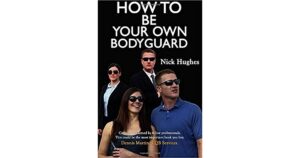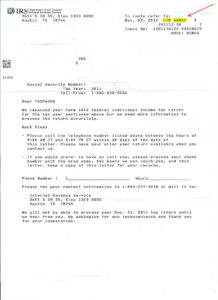
All photos by Al Thumz Photography
Happy New Year! Thank you for being here. I will apologize in advance for the length of what follows.
Between the economic impact resulting from restrictions imposed on businesses in reaction to COVID-19 as well as other factors — the term “starving writer” wasn’t pulled out of thin air — those of us who labor in the grammar mine might be having some problems making ends meet. What follows is a shopping hack called “Dollar Tree.”
I had never been in a Dollar Tree until early October 2020, having until that time succumbed to what was and is a certain negative cache attached to dollar stores in general. To my surprise I learned last year that one was going to occupy the last remaining storefront in a retail center a few blocks from my home. My invitation to the grand opening in April 2020 was apparently lost in the mail and as a result I didn’t learn until a few weeks before Halloween that it had been open for months, yet another reminder that behavior resulting in getting fitted with an ankle monitor can really cramp one’s style.
Dollar Tree has apparently been upping their game with new and larger stores located in (somewhat) better neighborhoods. The one near me has everything one could want or need, or a variation thereof. It has cleaning products,toys, school supplies, canned and paper goods, health and beauty aids, and automotive and tool products. The newer stores have a card section, a “Snack Zone,” and a refrigerated/frozen food case. The best part of Dollar Tree is that, unlike many stores with the word “dollar” in the name, Dollar Tree means what it says. Everything in the store can be had for a dollar. Period. Actually, that’s not quite accurate. Greeting cards are two for a dollar. There is also a shopping cart at the front of the store full of reduced-price — fifty cents — items that have been closed out. Everything else? One buck. This includes the Snack Zone where, in addition to chips, candy, and Little Debbie cakes, one can purchase fruits and vegetables (just kidding) (unless pork rinds count). The frozen food case features microwaveable breakfast, lunch, and dinner items as well as ice cream novelties (which of course can be eaten for breakfast, lunch, and dinner).
Not everything in Dollar Tree is a terrific deal. A box of baking soda is a dollar, but one can buy that in a supermarket for almost half the price. Boxes of theater candy are pretty much a dollar everywhere (except, interestingly enough, at a theater, even before they all closed), as are Arizona teas. There are, however some interesting finds in a Dollar Tree. The stores also now seem to be just about everywhere so if you want to read this as you walk through the aisles of one near you, please do so. What follows is a random sampling and review of what you can find, and what you should get or avoid, at a newer Dollar Tree.
— Golden Crust Jamaican Style Puffshell sandwiches:
The good: Everything. I’ve never seen these in a store outside of corner markets in New York until now.
The bad: Absolutely nothing at all.
Bottom line: Dollar Tree sells a few different varieties of these which, like Imperial Garden Egg Rolls (see below) all taste somewhat similar. That said, the Jerk Chicken is my favorite. Microwave it for two minutes and you can call it lunch or dinner, or both. Caveat: I don’t recommend eating one within twelve hours of a first date, second date, assignation, job interview. wedding, or any anniversary celebration before the tenth one.
— Motor oil:
The good: If your ex- asks you to top off their oil when they come over to pick up their stuff, this is what you want to use.
The bad: You don’t want to use motor oil that costs a dollar in your own auto unless you have a car like Fred Flintstone’s.
Bottom line: No.
— Zapp’s Potato Chips(!):
The good: My favorite potato chips! Voodoo Style! For a dollar! And I didn’t have to drive to Louisiana to get them!
The bad: None!
Bottom line: Life is good!
— Power steering fluid:
See Motor oil, above.
— Colorform playsets(!!!):
The good: COLORFORMS! For a buck! I didn’t even know Colorforms sets were still made. If Dollar Tree had a security guard, he would have been called to Aisle 3 when I initially found them. The discovery caused me to break out into my James Brown “goodfoot” dance. “YOWWW! HUNH! GOOD GAWD!”
The bad: Colorforms doesn’t make a Bettie Page set, but that isn’t the fault of Dollar Tree.
Bottom line: Colorforms! What more can I say
— Folding Knife:
The good: It is very sharp and surprisingly smooth when opening and closing.
The bad: The blade is short.
Bottom line: That isn’t a knife!

Now…THAT’S a knife!

— Copper Moon French Roast Coffee (Four K-cups):
The good: Everything.
The bad: Nothing.
Bottom line: I’m kind of a coffee snob. I usually only drink the Cafe du Monde, Community Coffee, or Bustelos brands. This, however, was surprisingly good. It has a rich, smooth flavor and, if you melt a Hershey’s kiss in it, a deep chocolate profile.
— Healthy Chef Canola No-Stick Cooking Spray:
The good: I wasted only one dollar on it.
The bad: I wasted a whole dollar on it.
Bottom line: It didn’t work at all. I actually thought about taking it back and getting a refund, but I would have looked like a cheap***.
— Assured Men’s Shave Cream Regular:
The good: It didn’t make my face fall off.
The bad: It didn’t make my face fall off.
Bottom line: I intended to buy a five-ounce can of Barbesol but the 12 ounce can of Dollar Tree’s house brand for the same price was too good to resist. It has a nice scent to it but the lather is a little thin. It’s good enough, however, that I might buy it again.
—”Tactical” flashlight:
The good: It is actually bright enough to use for ordinary purposes.
The bad: It is not a tactical flashlight.
Bottom line: It fails to meet the definition of a tactical flashlight in durability, size, ability to be dual-purposed as a self-defense instrument, and luminosity.Throw it in the glove box of your car as a substitute for one that should already be in there. Batteries — 3 “AAA” — are not included. The batteries actually cost more than the flashlight, unless you buy the batteries at Dollar Tree.
— Imperial Garden Egg Rolls:
The good: They are big and they are very tasty. Get a jar of Chinese hot mustard (not sold at Dollar Tree) and you’ll be all set to bypass Uber Eats for the night.
The bad: all of the flavors — chicken, pork, shrimp, and lobster — kind of taste the same.
Bottom line: These are not foodie quality but they get the job done. Dollar Tree could probably open stores near college campuses and turn a profit just on the sale of the egg rolls to drunken students on weekend nights or during exam week.
— Croc’s Refillable Butane Candle Lighters:
The good: The price.
The bad: None.
Bottom line: I learned recently that it is perfectly legal to buy and possess a flamethrower in forty-nine states (Maryland is the only poody-pants). While I am waiting for mine I can practice with this lighter which is as good if not better than the ones that cost two dollars and up at other stores. It eschews the two-step operation that most use, utilizing instead the equivalent of a double-action trigger pull that you’ll find on your better .38 Special revolvers. I thought about buying a bunch of them (the lighters) as Christmas stocking stuffers for the neighborhood children but tamped down the urge.
— Handsaw:
The good: It’s great if you need one just to trim a couple of tree branches and don’t own a chainsaw.
The bad: At the price of one dollar it should not be considered as a long-term tool for you. It can, however, be replaced rather easily and inexpensively.
Bottom line: This is part of “Tool Bench,” Dollar Tree’s in-house tool line. The irony is that the Dollar Tree where I purchased the saw is located in the former storefront of a Sears Hardware store.
— Greeting cards:
The good: Hallmark actually makes a line of greeting cards branded “Heartline” (I wonder if I could collect a quick settlement for trademark infringement using a “confusion in the marketplace” argument?) that 1) are two for a dollar and 2) don’t have the price on the back. They’re nice, too. None of my children could tell the difference this Christmas.
The bad: Your in-laws might buy you the same card you bought them and thus will know how much you paid for it.
Bottom line(s): 1) It actually costs more to mail the card than to buy it.
2) Sending your ex- a birthday card from Dollar Tree is like saying “God bless you!” in Nashville or “Have a magical day!” at Disney World.
DVDs:
The good: Cardboard boxes of obscure horror and thriller movies on DVD.
The bad: Cardboard boxes of obscure horror and thriller movies on DVD.
Bottom line: I had not heard of most of the movies or of the actors in them. If you are a fan of schlock horror I would recommend going to Dollar Tree for no other reason than to pour over what they have for sale. The boxes are usually in the school supply and toy aisles.
I invite you to visit and walk around Dollar Tree to see what else they have. Heck, if you find yourself at the one at Sunbury Road in Westerville, email me. I’ll drive over and give you a personal tour. I am willing to wager that you cannot walk out without spending at least ten dollars while delighting in doing so. A number of major brands, including Colorforms and Hallmark, seem to be offering products of a size that can be sold at the Dollar Tree price point. A Pepsi salesman was in the store during one of my (daily) visits and advised that the chain is one of their major clients. I also read somewhere that the folks who run Dollar Tree want their customers to be surprised by what they find every time they walk in the store. Mission accomplished. I found within their book section a couple of mass market paperback collections of Elmore Leonard western short stories. They were priced at a dollar each. They were not marked down or remaindered or anything. They are part of a small but growing line of HarperCollins paperbacks targeted for Dollar Tree customers.
Oh. I also have to compliment the store associates. They actually seem glad to see customers walk in and are familiar with the inventory and where it is located. One of them was interested when I told her that I was going to post a blog about Dollar Tree. She has asked me a couple of weeks why she hasn’t seen it yet. Here it is (Hi, Holly!). Another laughs at my jokes on a regular basis and on cue (Hi, Maribeth!). They treat me so well that I may go there for my birthday this year. After all, party supplies such as tablecloths, hats, those packs of ever-important “thank you” notes, and Dolly Madison Zingers are just a dollar. I even put a visit to Dollar Tree into my WIP, once I was able to tear myself away from playing with my Jurassic World Colorform set long enough to get some writing done. The best part of all is that, even after you get that huge publishing advance and license your work for a Netflix project, you will still want to shop at Dollar Tree.

If so inclined, please tell us your favorite store(s), why they are your favorite, and whether you plan to insert them into your stories. Thanks again for being here. Be well.


















